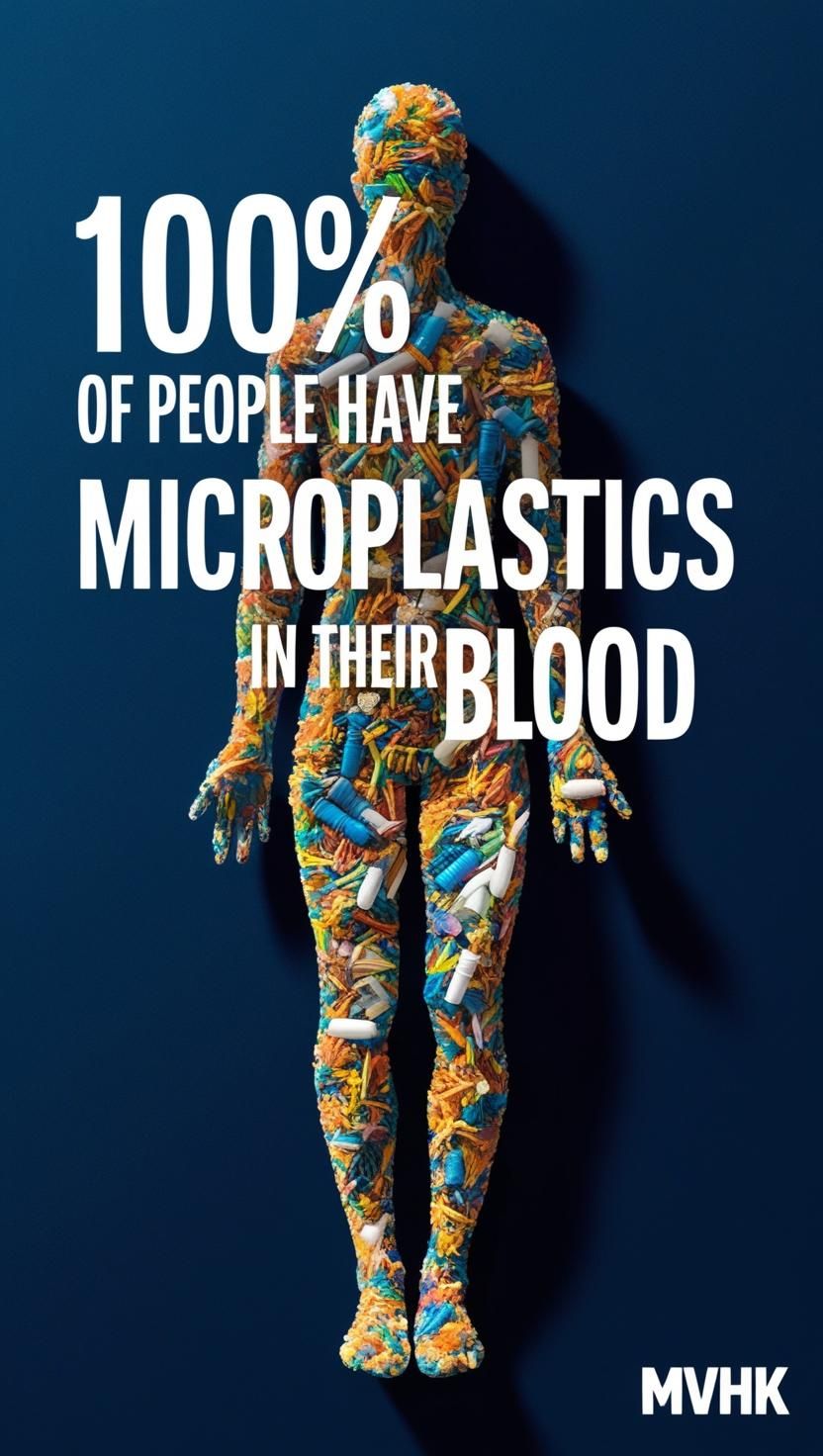Your Body is Full of Microplastics – Here’s Why You Should Be Concerned
1️⃣ What Are Microplastics and How Do They Enter Your Body?
🔬 Understanding Microplastics
Microplastics are tiny plastic particles, less than 5mm in size, that come from broken-down plastic waste, synthetic fibers, and even industrial processes. These particles are now present in the air, water, and food we consume daily.
🛑 Common Sources of Microplastic Exposure
Microplastics enter the human body through various means:
- Drinking Water: Both tap and bottled water contain microplastics.
- Food: Seafood, salt, and even fresh produce have been found to carry plastic particles.
- Air: Inhalation of microplastic fibers from textiles and industrial pollution.
- Consumer Products: Personal care items like toothpaste and cosmetics often contain microplastics.
2️⃣ The Shocking Science: Microplastics in Every Organ
💀 100% of People Have Microplastics in Their Blood
A groundbreaking study found that every single participant tested had microplastics in their bloodstream. This indicates continuous exposure and bioaccumulation in the body.
🫁 Microplastics Found in Lungs, Liver, and Breast Milk
Recent research has detected microplastics in human lungs, liver, and even breast milk, raising serious concerns about potential health effects on both adults and infants (Harvard Study).
📈 10X Increase in Just 20 Years
Microplastic concentrations have increased dramatically over the past two decades due to rising plastic production and pollution levels. Scientists predict this trend will continue unless drastic measures are taken.
3️⃣ How Microplastics Affect Your Health
🦠 Disrupting the Immune System
Microplastics can trigger immune system responses, leading to inflammation and long-term immune dysfunction. Chronic exposure may contribute to autoimmune disorders.
🧬 DNA Damage and Cancer Risk
Some microplastics contain toxic chemicals and endocrine disruptors that may damage DNA, increasing the risk of cancerous mutations (WHO Study).
🏥 Linked to Heart Disease and Stroke
Microplastics in the bloodstream can contribute to plaque buildup in arteries, potentially increasing the risk of heart disease and stroke.
🤰 Risks for Pregnant Women and Infants
The presence of microplastics in breast milk suggests potential exposure to infants. Studies also indicate a risk of placental transfer, which may impact fetal development.
4️⃣ How to Reduce Microplastic Exposure
🚰 1. Filter Your Water
Use high-quality water filters that can remove microplastics from tap water. Reverse osmosis and activated carbon filters are the most effective.
🍽 2. Avoid Processed and Packaged Foods
Reduce consumption of plastic-wrapped foods. Opt for fresh, organic produce and home-cooked meals to minimize exposure.
🌿 3. Switch to Natural Fiber Clothing
Synthetic fabrics shed microplastic fibers into the air and water. Choose natural fibers like cotton, wool, and hemp to reduce contamination.
🛍 4. Use Plastic-Free Personal Care Products
Many beauty and hygiene products contain microplastics. Check ingredient lists for terms like “polyethylene” and “polypropylene” and opt for natural alternatives.
🛑 5. Reduce Plastic Waste
Avoid single-use plastics, support eco-friendly packaging, and participate in clean-up efforts to help reduce plastic pollution at its source.
Conclusion: Take Action Today
The reality is clear—microplastics are everywhere, and their impact on human health is alarming. While we can’t eliminate exposure completely, taking steps to reduce ingestion and inhalation can make a significant difference.
🔗 Learn More: Related Article on Reducing Toxic Exposure
Frequently Asked Questions about Microplastics
🧐 How much plastic do we consume weekly?
Studies show that the average person ingests 5 grams of plastic per week, equivalent to the size of a credit card.
🧐 Can the body get rid of microplastics?
While some particles may be excreted, others accumulate in tissues and organs, posing potential long-term health risks.
🧐 Are microplastics in bottled water?
Yes, bottled water often contains more microplastics than tap water due to plastic packaging breakdown.





